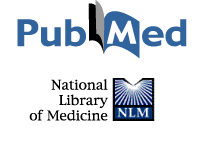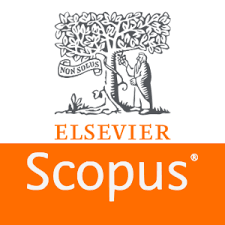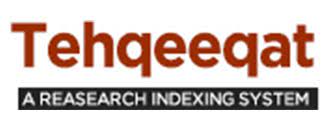ANALYSIS OF CAESAREAN SECTION RATES USING THE ROBSON’S TEN GROUP CLASSIFICATION SYSTEM (TGCS) AT TERTIARY LEVEL HEALTHCARE FACILITIES IN RAWALPINDI, PAKISTAN: A CROSS-SECTIONAL STUDY
DOI:
https://doi.org/10.55519/JAMC-01-13094Keywords:
Cesarean section, TGCS, Robson Guidelines, Pakistan, CS ratesAbstract
Background: Robson’s Ten Group Classification System (TGCS) is recommended as a global standard for assessing, monitoring, and comparing Cesarean Section rates at all levels. This study was conducted to audit CS deliveries using the Robson TGCS to understand the current CS practices and analyze the groups of women who are mainly contributing to the rising rates of CS in Pakistan. Methods: A cross-sectional study was conducted in three tertiary care hospitals in Rawalpindi, Pakistan. All women who gave birth in these health facilities between, June to August 2019, were included in the study. Data were collected using a standardized proforma and analyzed using Robson guidelines to calculate each group’s relative size, group-specific CS rate, and relative and absolute group contributions toward overall Caesarean section rates. Results: A total of 5,657 deliveries were analyzed. Out of these, 2255 (40%) were Cesarean sections. Women in Group 3 made the largest contribution to the obstetric population accounting for 26.3% of all deliveries. The largest contributors to the overall CS rate were Group 5 (41.7 %), Group 10 (17.3%), and Group 2 (12.7%). Conclusion: A CS rate of 39.9% was reported, which is much higher than the WHO recommended optimal rate of CS. Group 5 (previous CS) was found to be the largest contributor to the overall CS rates followed by Group 10. This study provides a model for institutionalizing RTGCS and should be replicated in other districts of Pakistan.
References
1. Boerma T, Ronsmans C, Melesse DY, Barros AJD, Barros FC, Juan L, et al. Global epidemiology of use of and disparities in caesarean sections. Lancet 2018;392:1341–8.
2. Betrán AP, Ye J, Moller AB, Zhang J, Gülmezoglu AM, Torloni MR. The increasing trend in caesarean section rates: global, regional and national estimates: 1990–2014. PLoS One 2016;11(2):e0148343.
3. Brownlee S, Chalkidou K, Doust J, Elshaug AG, Glasziou P, Hurley J, et al. Evidence for overuse of medical services around the world. Lancet 2017;390(10090):156–68.
4. Solheim KN, Esakoff TF, Little SE, Cheng YW, Sparks TN, Caughey AB. The effect of cesarean delivery rates on the future incidence of placenta previa, placenta accreta, and maternal mortality. J Matern Fetal Neonatal Med 2011;24(11):1341–6.
5. Sentilhes L, Vayssière C, Beucher G, Deneux-Tharaux C, Deruelle P, Diemunsch P, et al. Delivery for women with a previous cesarean: guidelines for clinical practice from the French College of Gynecologists and Obstetricians (CNGOF). Eur J Obstet Gynecol Reprod Biol 2013;170(1):25–32.
6. The Lancet. Stemming the global caesarean section epidemic. Lancet 2018;392(10155):1279.
7. Betrán AP, Torloni MR, Zhang J, Ye J, Mikolajczyk R, Deneux-Tharaux C, et al. What is the optimal rate of caesarean section at population level? A systematic review of ecologic studies. Reprod Health 2015;12(1):57.
8. Althabe F, Sosa C, Belizán JM, Gibbons L, Jacquerioz F, Bergel E. Cesarean section rates and maternal and neonatal mortality in low-, medium-, and high-income countries: an ecological study. Birth 2006;33(4):270–7.
9.. Betrán AP, Ye J, Moller AB, Zhang J, Gülmezoglu AM, Torloni MR. The increasing trend in caesarean section rates: global, regional and national estimates: 1990–2014. PLoS One 2016;11(2):e0148343.
10. Mumtaz S, Bahk J, Khang YH. Rising trends and inequalities in cesarean section rates in Pakistan: evidence from Pakistan Demographic and Health Surveys, 1990–2013. PLoS One 2017;12(10):e0186563.
11. National Institute of Population Studies (NIPS). Pakistan Demographic and Health Survey 2017–18 [Internet]. 2017. [cited 2018 Oct 16]. Available from: http://nips.org.pk/abstract_files/PDHS%202017-18%20-%20key%20findings.pdf
12. Ye J, Betrán AP, Guerrero Vela M, Souza JP, Zhang J. Searching for the optimal rate of medically necessary cesarean delivery. Birth 2014;41(3):237–44.
13. Belizán JM, Minckas N, McClure EM, Goudar SS, Pasha O, Esamai F, et al. A global network study to identify a minimum and rational proportion of caesarean sections in resource-poor settings. Lancet Glob Health 2018;6(8):e894–901.
14. Torloni MR, Betrán AP, Souza JP, Widmer M, Allen T, Gülmezoglu AM, et al. Classifications for cesarean section: a systematic review. PLoS One 2011;6(1):e14566.
15. Abubeker FA, Gashawbeza B, Gebre TM, Wondafrash M, Teklu AM, Degu D, et al. Analysis of cesarean section rates using Robson ten group classification system in a tertiary teaching hospital, Addis Ababa, Ethiopia: a cross-sectional study. BMC Pregnancy Childbirth 2020;20(1):130.
16. Hassan L, Woodbury L, Jamal N, Baral G, Ferdous J, Sohail R, et al. Examining the efficacy of the Robson classification system for optimizing cesarean section rates in South Asia. J South Asian Feder Obstet Gynaecol 2020;12(6):366–71.
17. WHO. Robson classification: implementation manual. Geneva: World Health Organization; 2017. [Internet]. [cited 2018 Oct 16]. Available from: http://www.who.int/reproductivehealth/publications/maternal_perinatal_health/robson-classification/en/
18. Tasnim N, Naeem S, Shah M. High cesarean section rate in tertiary care hospital: are we justified? J Soc Obstet Gynaecol Pak 2019;9(2):78–82.
19. Saleh SS. The changing trend in the rate of caesarean section at a teaching hospital. J Obstet Gynaecol 2003;23(2):146–9.
20. Parveen T, Devi R. Rising trend in primary caesarean section among low-risk nulliparous women. Pak J Surg 2021;37(1):37–43.
21. Parveen R, Khakwani M, Naz A, Bhatti R. Analysis of cesarean sections using Robson’s ten group classification system. Pak J Med Sci 2021;37(2):567–71.
22. Dhodapkar S, Bhairavi S, Daniel M, Chauhan N, Chauhan R. Analysis of caesarean sections according to Robson’s ten group classification system at a tertiary care teaching hospital in South India. Int J Reprod Contracept Obstet Gynecol 2015;4(3):745–9.
23. Sah S, Goel R, Goel JK. Analysis of caesarean section rate according to Robson’s criteria in tertiary care centre. Int J Reprod Contracept Obstet Gynecol 2018;7(8):3060–4.
24. Martel MJ, MacKinnon CJ. Clinical Practice Obstetrics Committee, Society of Obstetricians and Gynaecologists of Canada. Guidelines for vaginal birth after previous caesarean birth. J Obstet Gynaecol Can 2005;27(2):164–88.
25. Guise JM, Eden K, Emeis C, Denman MA, Marshall N, Fu RR, et al. Vaginal birth after cesarean: new insights. Evid Rep Technol Assess (Full Rep) 2010;(191):1–397.
26.Parveen R, Khakwani M, Naz A, Bhatti R. Analysis of cesarean sections using Robson’s ten group classification system. Pak J Med Sci 2021;37(2):567–71.
27. Wu Y, Kataria Y, Wang Z, Ming WK, Ellervik C. Factors associated with successful vaginal birth after a cesarean section: a systematic review and meta-analysis. BMC Pregnancy Childbirth 2019;19(1):360.
28. Kazmi T, Saiseema VS, Khan S. Analysis of cesarean section rate according to Robson’s 10-group classification. Oman Med J 2012;27(5):415–7.
29. Sabetghadam S, Keramat A, Goli S, Malary M, Rezaie Chamani S. Assessment of medicalization of pregnancy and childbirth in low-risk pregnancies: a cross-sectional study. Int J Community Based Nurs Midwifery 2022;10(1):64–73.
30. Leduc D, Biringer A, Lee L, Dy J, Corbett T, Leduc D, et al. Induction of labour. J Obstet Gynaecol Can 2013;35(9):840–57.
31. Kaplanoglu M, Bulbul M, Kaplanoglu D, Bakacak SM. Effect of multiple repeat cesarean sections on maternal morbidity: data from Southeast Turkey. Med Sci Monit 2015;21:1447–53.
Downloads
Published
How to Cite
Issue
Section
License
Copyright (c) 2025 Rizwana Chaudhri, Kauser Hanif, Humaira Bilquis, Tahira Ezra Reza, Qudsia Uzma, Ammarah Khan, Atiya Aabroo, Fazal ur Rehman, Faran Emmanuel

This work is licensed under a Creative Commons Attribution-NoDerivatives 4.0 International License.
Journal of Ayub Medical College, Abbottabad is an OPEN ACCESS JOURNAL which means that all content is FREELY available without charge to all users whether registered with the journal or not. The work published by J Ayub Med Coll Abbottabad is licensed and distributed under the creative commons License CC BY ND Attribution-NoDerivs. Material printed in this journal is OPEN to access, and are FREE for use in academic and research work with proper citation. J Ayub Med Coll Abbottabad accepts only original material for publication with the understanding that except for abstracts, no part of the data has been published or will be submitted for publication elsewhere before appearing in J Ayub Med Coll Abbottabad. The Editorial Board of J Ayub Med Coll Abbottabad makes every effort to ensure the accuracy and authenticity of material printed in J Ayub Med Coll Abbottabad. However, conclusions and statements expressed are views of the authors and do not reflect the opinion/policy of J Ayub Med Coll Abbottabad or the Editorial Board.
USERS are allowed to read, download, copy, distribute, print, search, or link to the full texts of the articles, or use them for any other lawful purpose, without asking prior permission from the publisher or the author. This is in accordance with the BOAI definition of open access.
AUTHORS retain the rights of free downloading/unlimited e-print of full text and sharing/disseminating the article without any restriction, by any means including twitter, scholarly collaboration networks such as ResearchGate, Academia.eu, and social media sites such as Twitter, LinkedIn, Google Scholar and any other professional or academic networking site.










